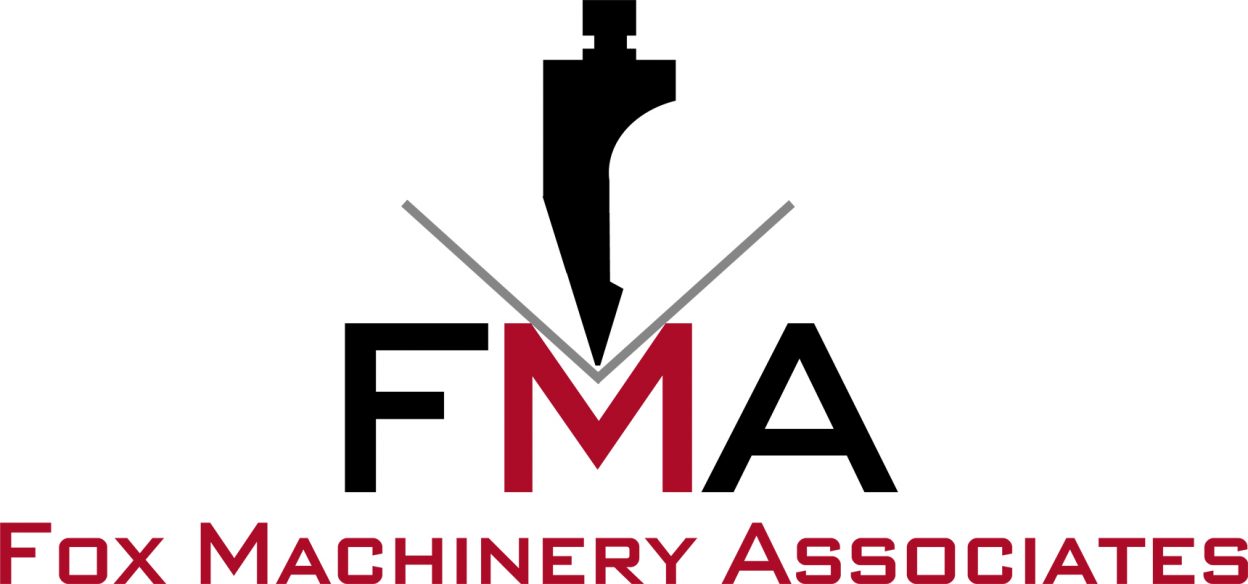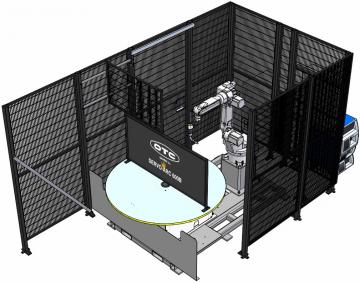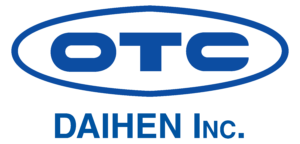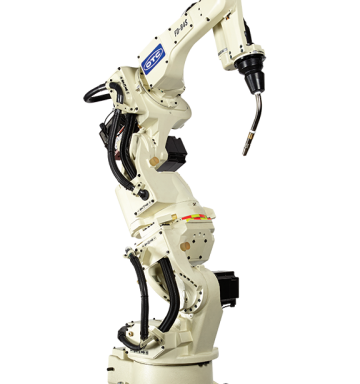Features
The investment into robotic welding has a proven ROI as it helps manufacturers overcome the labor shortage, demands for faster production and a need for more capacity or advanced skills to fit complex new jobs on the line.
Robotic welding allows you to maximize capacity. A robot can be welding a part while the previous part is being uploaded and new components reloaded, dramatically cutting downtime.
With 16 standard models to choose from, there is a robotic welding cell for all shop sizes. A few examples are below. Talk to your Sales Engineer to see explore the options best suited for your application!
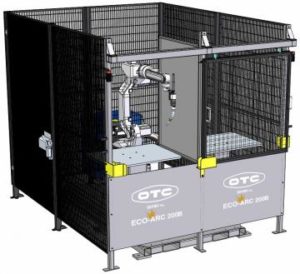 ECO-ARC-200L-Series-II: economically designed with stationary tables for durability and quick cycle times. The OTC ECO-ARC 200L is best suited for production runs of medium to high volume, with little or no part positioning. A simple, compact design allows for quick teach times and part access. Includes standard pneumatic doors. This cell provides a larger work envelope with a long arm robot manipulator and two larger table tops.
ECO-ARC-200L-Series-II: economically designed with stationary tables for durability and quick cycle times. The OTC ECO-ARC 200L is best suited for production runs of medium to high volume, with little or no part positioning. A simple, compact design allows for quick teach times and part access. Includes standard pneumatic doors. This cell provides a larger work envelope with a long arm robot manipulator and two larger table tops.
ROTA-ARC-1000-Series-II: incorporates a compact design is ideal for complex parts in small spaces. It is effective at reducing your cycle times and overhead costs with a 6 sec. average index time and smaller footprint. The ROTA-ARC series supports configurations of 1 and 2 arc-welding robots. The ROTA-ARC 1000 supports a payload of 1000kg per side with a 1500mm span on each headstock/tailstock combo.
PT-ARC-600B: pneumatic turntable positioning cell is designed for small and medium size parts with minimal operator movement required. The operator can prepare the work on side A while the robot is welding on side B. This basic cell provides cost savings with a smaller base and floor mounted safety fencing.
DT-ARC-500: dual servo-controlled head and tailstock-positioning cell is designed for medium and large parts. The two-station configuration allows the operator to prepare work on station one while the robot welds on station two. The OTC DT-ARC 500 is a flexible design to allow for 180 degree and 120 degree station orientations. The open station load design allows for crane access with heavier payloads.
